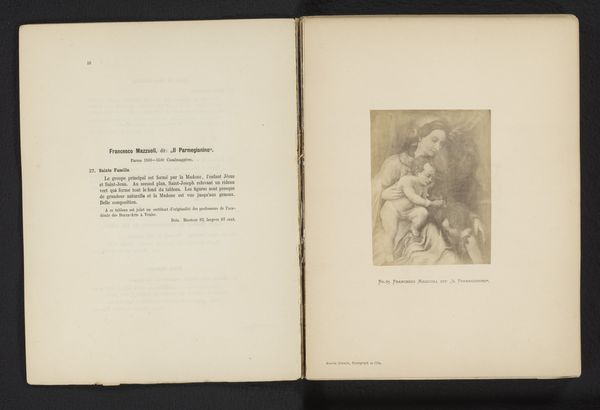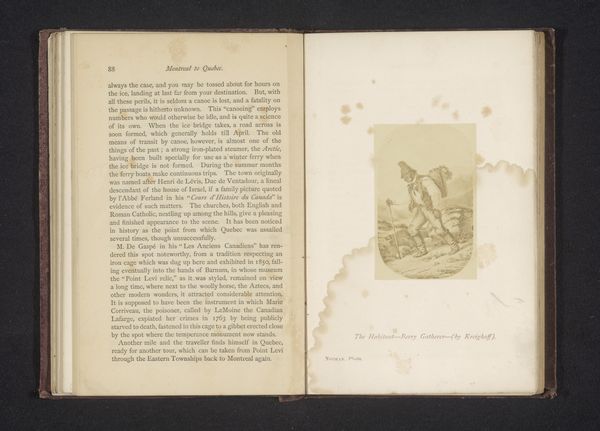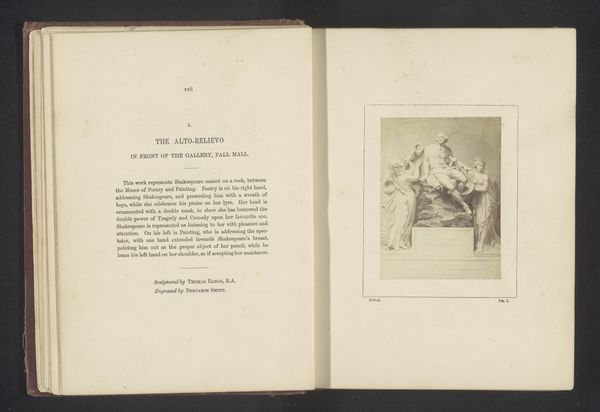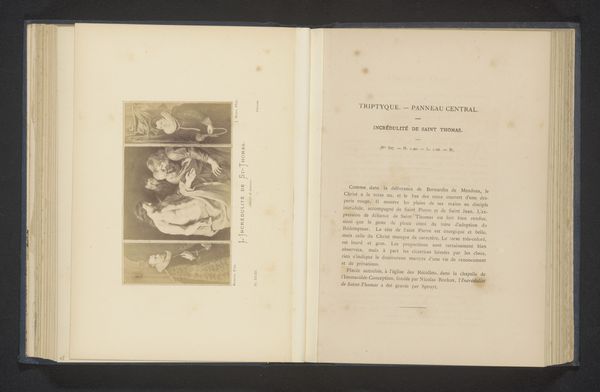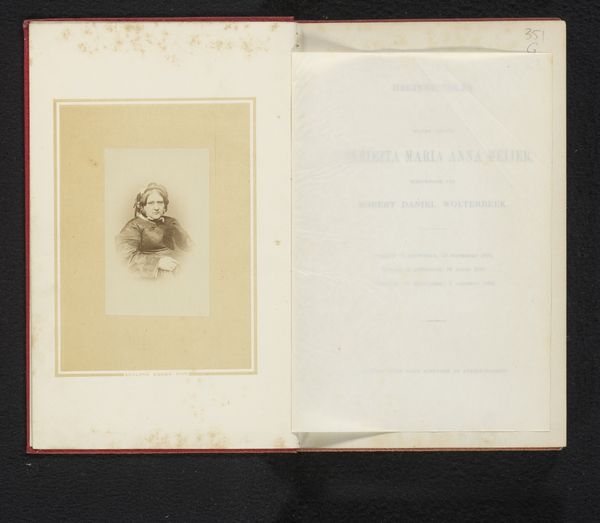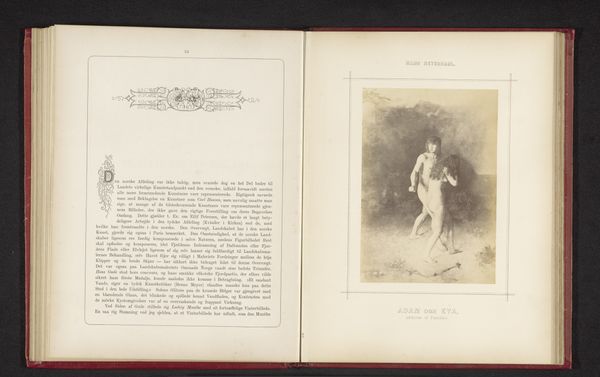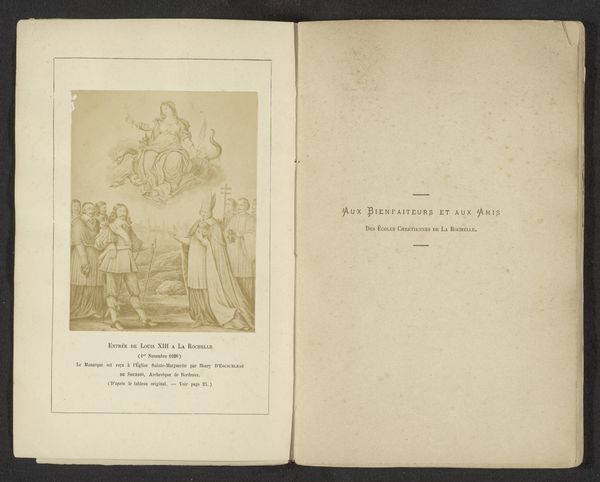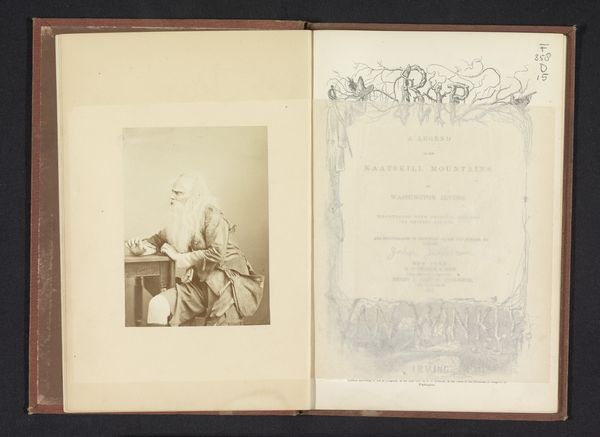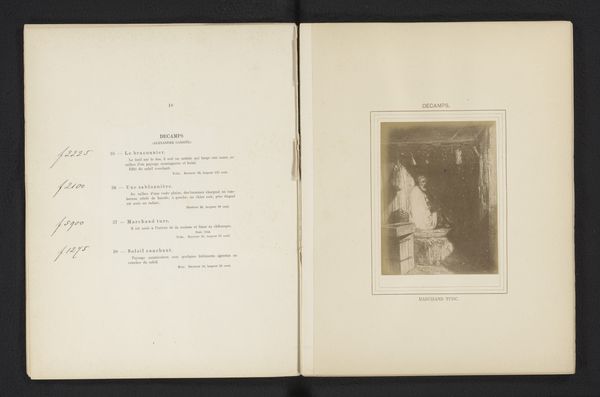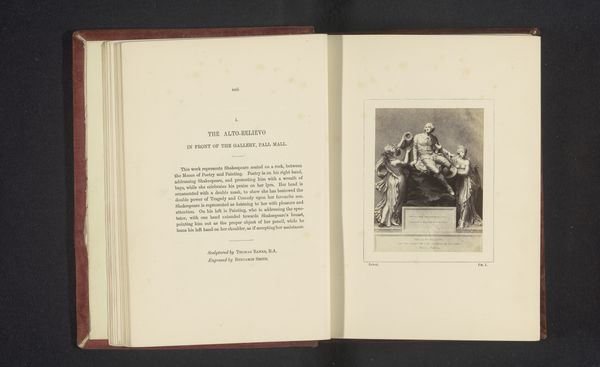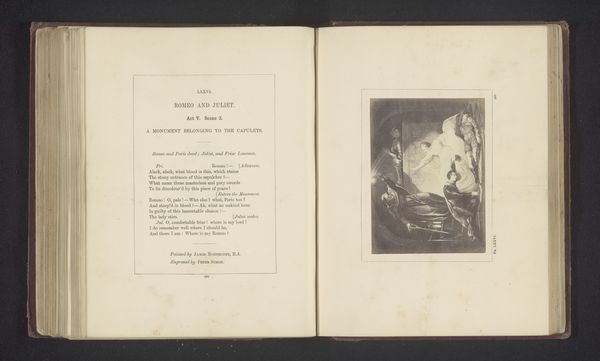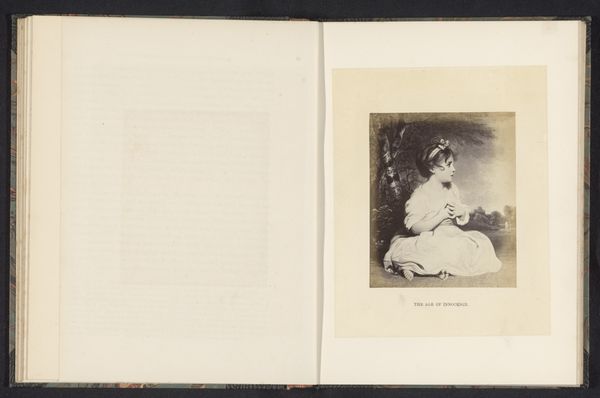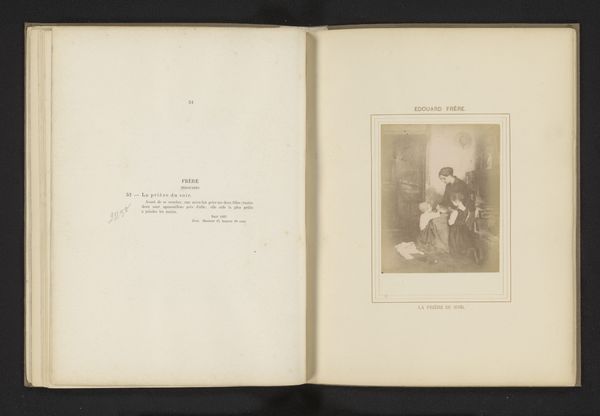
graphic-art, print, photography
#
portrait
#
graphic-art
#
aged paper
#
script typography
#
self-portrait
# print
#
hand drawn type
#
photography
#
personal sketchbook
#
hand-drawn typeface
#
fading type
#
stylized text
#
thick font
#
sketchbook drawing
#
sketchbook art
Dimensions: height 95 mm, width 70 mm
Copyright: Rijks Museum: Open Domain
Curator: This is a photographic reproduction of a portrait of Marie Hanstein, dating from before 1876. Editor: It’s presented as an open book, which immediately gives it a vulnerable and intimate feel, as though we’re peering into someone's personal sketchbook. Curator: Exactly. We see two pages, the one on the left showcasing the portrait itself in subdued tones; the opposite page includes script typography that possibly details related literature to Hanstein's likeness. The aged paper only reinforces the intimacy, bridging us to her time. How do you see that operating here? Editor: Well, portraits in the mid-19th century often served as tools for negotiating identity. In this case, it would have communicated Hanstein's social standing or aspirations. Considering the era's limitations for women, and her clear association to literature of some kind, I think it suggests an engagement with intellect that deserves recognition. The sketch, however preliminary or 'reproduced', defies then-contemporary limitations, at least aesthetically. Curator: It's fascinating to think of how such visual strategies operated within a culture increasingly saturated with images. As photographic techniques became more accessible, did that impact artistic representation and autonomy? Editor: Absolutely, the increasing availability of photographic reproductions inevitably shifted artistic emphasis, pressuring painters and sketch artists to focus more on symbolic or emotive expression as opposed to purely capturing likeness. We see an emerging trend, as artists wrestled to define or refine the public perception of individuals - usually done in relation to power. In many cases the hand-drawn became valued over photo-reproductions, or mass printings because the painter was directly communicating that 'truth' to power. The photographic production, particularly with a person like Hanstein, gives that subject power of visibility too. Curator: You've illuminated such compelling contextual points. How artists grapple with representation in a shifting social sphere certainly makes this photographic sketch much more telling about the politics of its time. Editor: Precisely! And to consider that this piece may function almost as meta-commentary on representation itself? Curator: Definitely provides further critical directions for how we could look at this piece - and maybe even how she herself saw that landscape. A thought to definitely linger on as we think of artists both now and then making statements through image, medium, and concept.
Comments
No comments
Be the first to comment and join the conversation on the ultimate creative platform.
